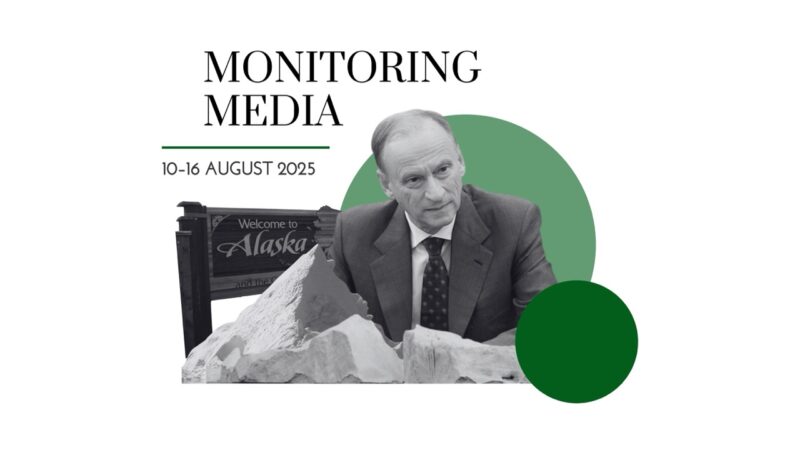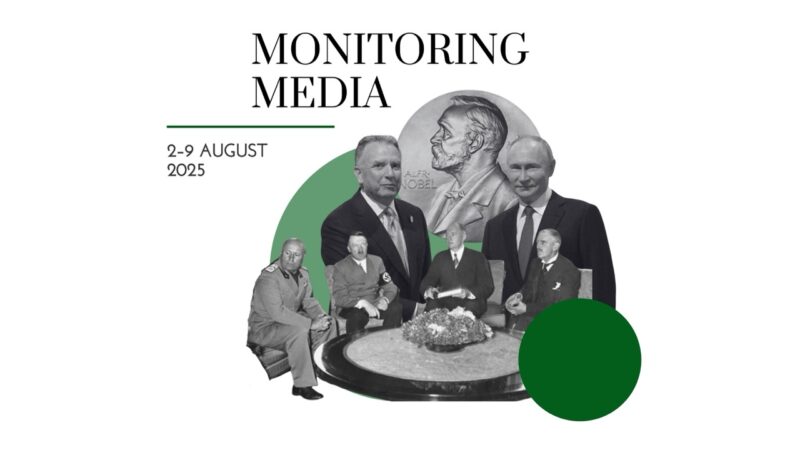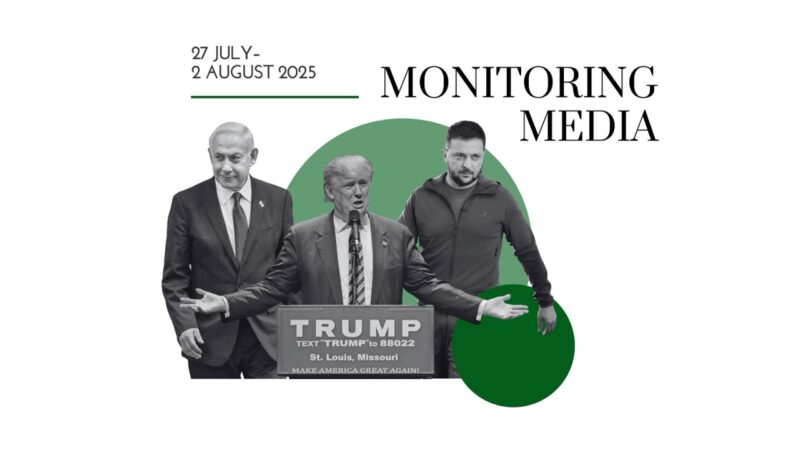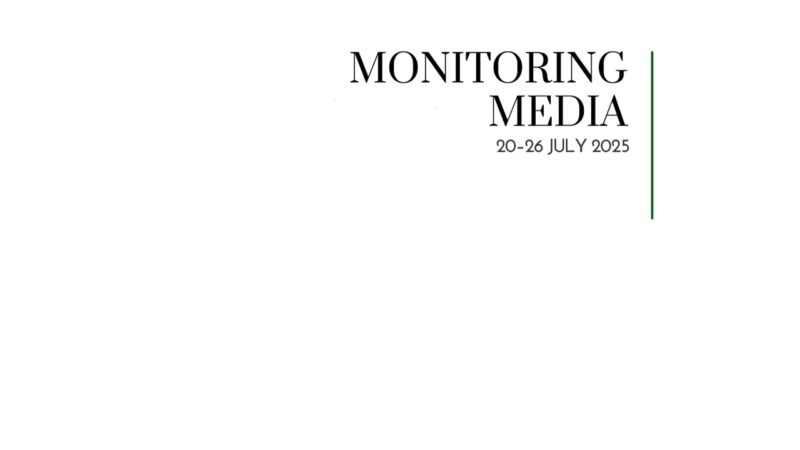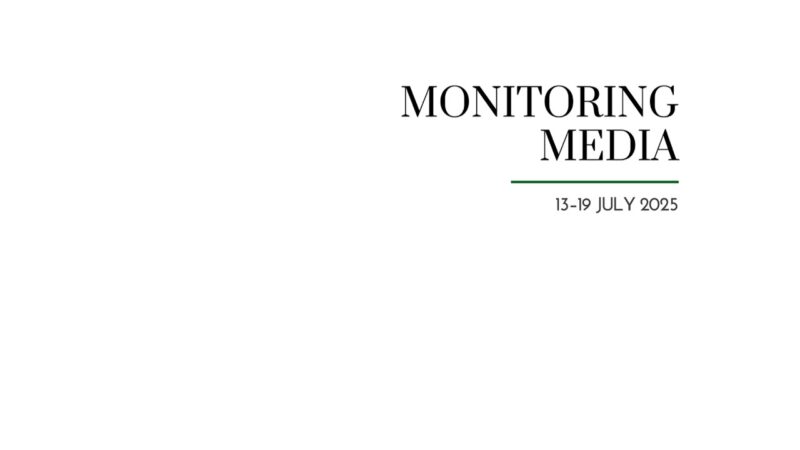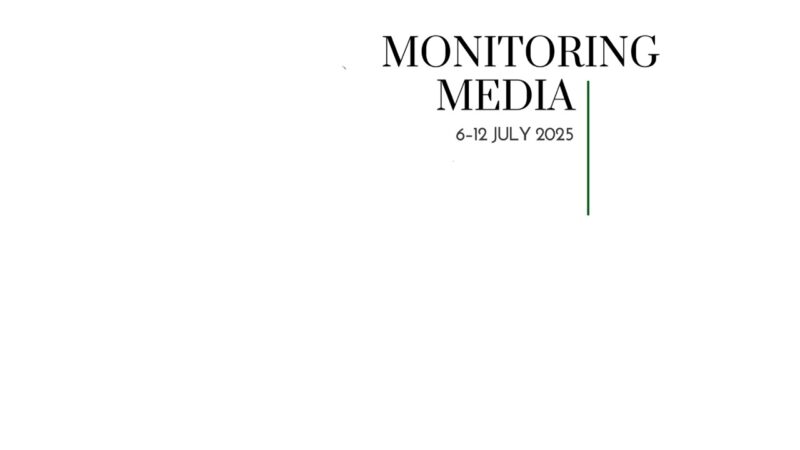The West should not fall for Moscow’s bluff

CIUS weekly report on North American media coverage of Ukrainian affairs, 15–21 September 2024
Four publications (The Wall Street Journal, The National Interest, Globe and Mail, and Macdonald-Laurier Institute) were selected to prepare this report on how Ukraine has been portrayed in the North American press during the past week. The sample was compiled based on their impact on public opinion as well as on their professional reputation, popularity among the readership, and topical relevance. These publications represent centrist viewpoints on the political spectrum.
This MMS report covers only the most-read and relevant articles about Ukraine, as ranked by the respective North American publications themselves in the past week. Its scope covers promoted articles on home pages and articles from special sections on Ukraine, with the hashtag #Ukraine, from the paper editions of the publications, and about Ukraine from opinion columns and editorials.
Featured topics
- The world and Ukraine: Kyiv’s successes in Crimea demonstrate what Ukraine is capable of; the Kursk offensive enhances Ukraine’s economic security; the Kursk offensive is about geometry, not geography.
- Russia at war: the West should not fall for Moscow’s bluff.
MMS summaries
Crimea shows what Ukraine can do. Anna Husarska (Wall Street Journal) believes that the success of Ukraine’s counterattacks into Crimea is the strongest argument for allowing Kyiv to strike deep into Russia. Since April 2022, Ukraine has been striking Crimea with weapons of its own production. A little later, Kyiv began using Western weapons: “Last September, Ukraine used Storm Shadow missiles to hit Russia’s Black Sea Fleet headquarters in Sevastopol. This May, Ukrainian forces hit the airfield in Belbek with Army Tactical Missile Systems, or ATACMs, taking out two of Russia’s valuable MiG-31 fighter jets. Also that month, Ukraine struck a Russian Air Force communications center in Alushta with ATACMs. In June, Ukraine successfully launched ATACMs at Russian air defense systems in Yevpatoria and Chornomorske, both in western Crimea, and at a surface-to-air system in Dzhankoi, in the north. Crimea, which Mr. Putin has called the ‘unsinkable aircraft carrier,’ started taking on water.” Kyiv’s successes in Crimea forced Russia to redeploy its Black Sea Fleet from Sevastopol to Novorossiysk and allowed Ukraine to resume grain exports from southern ports in May. According to the author, “If Ukraine could launch long-range weapons at targets in Russia, the costs of the war would rise for Moscow. Ukraine’s ability to hit ammunition depots, fuel-storage facilities, training bases, logistics hubs and manufacturing sites that support Russia’s war machine would leave Mr. Putin short on supplies to carry out his war of aggression.” Ukraine is waiting for permission to strike deep into Russia, even though it has every right under the UN Charter to use Western weapons against the aggressor. According to Husarska, “The longer Washington waits to give Ukraine permission, the more civilians will die, towns will be obliterated, and Ukrainian ranks will be depleted. It’s past time for President Biden to stop this needless bloodshed.”
Kursk offensive enhances Ukraine’s economic security. Erik Herron and Ralph Clem (National Interest) are convinced that Ukraine’s offensive on Kursk has economic benefits. The war being transferred to Russian territory helps to preserve Ukraine’s production capacities. This may not be the key goal of changing the geography of the war, but it potentially reduces the pressure on vital regions of the state. Four out of the five most economically productive territories were affected most by the war: “The cities of Kyiv, Dnipro, Kharkiv, and Lviv are among the hardest hit and accounted for about 45 percent of gross national product in 2021.” Although Ukraine has managed to recover significantly from a 20 per cent drop in gross national product in the year following Russia’s escalated invasion in February 2022, the challenges to full recovery and future growth remain daunting. According to Herron and Clem, “Protecting and preserving productive capacity may not be the primary objective of the Kursk operation, but [they] may be among the benefits of taking the war to Russian soil.”
The West should not fall for Moscow’s bluff. Michael Bociurkiw (Globe and Mail) emphasizes that the West should not fall for Moscow’s bluff on supplying Ukraine with long-range missiles. Russia systematically attacks Ukrainian civilian infrastructure with ballistic missiles and drones with impunity: “Two weeks earlier, residents of the western Ukrainian city of Lviv—the region from where many Ukrainian Canadians trace their roots—–weren’t so lucky: precision strikes of Russian ballistic missiles and drones killed seven, injured more than 50, and caused massive damage to residential areas.” Ukraine is a country with a large territory, larger even than France, which makes it impossible to protect every square kilometre with air defence systems. Strikes deep into Russia will help to protect civilians by destroying the sites from which attacks on Ukraine are launched. According to the author, “It is high time Western allies abandoned the drip-drip approach of aiding Ukraine.” This will bring Kyiv’s victory closer. Providing missiles and permission to hit targets on Russian territory may lead to an escalation of the conflict by Moscow, but the alternative of not providing them would be even worse: “More civilian Ukrainian deaths and damage to critical infrastructure that could trigger another massive flow of asylum-seekers toward Europe—and further irreversible damage to the NATO alliance’s credibility.”
Kursk offensive is about geometry, not geography. Ann Marie Dailey (National Interest) is convinced that the Kursk offensive was a tactical masterpiece that changed the geometry of the battlefield, expanding Russia’s lines and forcing it to rethink their force allocation assumptions. This step allowed Ukraine to gain immediate tactical and operational advantages, and in the long run, if Kyiv can consolidate its successes, it can transform them into strategic advantages. The Kursk operation generated the following strategic advantages: (1) fighting on the Russian side of the border has boosted the morale of Ukrainian soldiers and civilians; (2) Russia has been forced to use conscripts, which could destabilize the situation in Russia itself; and (3) the myth of “Russian red lines” has been shattered. According to the author, “Taken together, these benefits have allowed Kyiv to change the narrative and build a theory of victory.” This operation is extremely risky, but wars are not won any other way. According to US Army doctrine, “audacity is a willingness to take bold risks. The offense favors the bold execution of plans.” According to Dailey, Kyiv made the right decision, and now it must take advantage of its achievements: “If Ukraine can dig in defenses, it will force Russia to continue using poorly trained conscripts, divert Russian forces from the front line in Ukraine, and lead to continued Russian bombing of its territory in an attempt to take it back.”
Russians at War undermines the West’s certainty in Russia’s war against Ukraine. Alexander Rodnyansky (Globe and Mail) writes that the Toronto International Film Festival’s decision to screen Anastasia Trofimova’s documentary Russians At War sparked a heated debate, eliciting strong reactions from both Ukrainians and anti-war Russians. Critics argue that while the film is technically well made and has garnered praise, its portrayal of Russian soldiers raises significant concerns. The emotional protests against the film, though rooted in the raw pain of Ukrainians affected by the ongoing war, have sometimes led to simplistic interpretations of its content. For many, the assertion that the film merely seeks to “portray Russians as humans” undermines the very real and complex narratives of suffering and loss experienced by those on the front lines, making it essential to navigate these emotional waters with care, Rodnyansky notes. The crux of the controversy lies in the film’s perceived lack of accountability regarding Russian narratives and propaganda. Trofimova’s background with RT Documentary, a state-funded propaganda channel, complicates her claims of impartiality, raising questions about the integrity of her portrayal of Russian soldiers. By allowing these soldiers to voice their perspectives without adequate context or challenge to their claims—such as the assertion that they are fighting “Nazis in Ukraine”—the film threatens to perpetuate misleading narratives. Rodnyansky notes that while the film may not present an overtly pro-Russian message, it appears to advance the Kremlin’s narratives by giving a voice to soldiers who continue to participate in the violence: “That’s what ‘Russians At War’ does—it advances the Kremlin’s war aims. Even if it’s inadvertent, that’s something worth being emotional about.”
Russian propaganda should have no place on Canada’s screens. Chris Alexander (Macdonald-Laurier Institute) argues that Anastasia Trofimova’s documentary Russians at War, which was shown outside of the Toronto International Film Festival (TIFF) main program, presents a sanitized and one-sided view of the war, failing to acknowledge the war crimes committed by Russian forces. Trofimova’s past association with RT Documentary raises concerns about her independence as a filmmaker. In her defence, she claims that she spent seven months embedded with Russian troops and did not witness any war crimes, a statement that has led to widespread outrage among Ukrainian representatives and allies. The Ukrainian government and various organizations have called for TIFF to cancel the film’s screenings, arguing that “Trofimova is not an independent voice” and pointing to her connections with RTD as well as the film’s overt alignment with Kremlin narratives. Moreover, Alexander writes, the film’s funding sources, including support from the Canada Media Fund and TVO Media Education Group, amplify concerns about its implications for freedom of speech and the historical context of propaganda at film festivals. Critics emphasize that TIFF’s initial assertion—that Trofimova’s film was created “without the knowledge or participation of any Russian government agencies”—demonstrates a serious misunderstanding of the complex realities surrounding the film and its production. “By bringing the ‘perspectives’ of today’s totalitarian Russia to our theatres, festival organizers are endangering freedom of speech, putting TIFF on the wrong side of history,” the author concludes. “Russian propaganda should have no place on Canada’s stages or screens.”
US military must learn from Ukraine, adapt to innovative warfare tech to avoid future defeats. David Petraeus and Andy Yakulis (Wall Street Journal) underscore that the ongoing conflicts in Ukraine, Gaza, and the Red Sea have highlighted a crucial reality: the emergence of innovative and low-cost technologies is fundamentally reshaping modern warfare. As demonstrated by Ukraine’s ability to effectively combat a more powerful adversary, the US military must urgently overhaul its defence systems, including operational strategies, training methods, and weapons procurement processes. The use of cheap, mass-produced drones and “cutting-edge technologies, produced rapidly and at enormous scale, have enabled Ukraine’s successes,” illustrating the critical need for the US to replicate such achievements to maintain military effectiveness in future wars. To adapt to this new landscape, US military leaders are beginning to acknowledge the necessity of integrating these technologies into their operations. Measures like the Replicator Initiative aim to provide the military with affordable drone options, yet these efforts currently lag behind the rapid advancements that have been made in Ukraine, where the focus has shifted to producing large quantities of less expensive drones in order to overwhelm the invaders. The authors emphasize that “speed and volume must take precedence over exquisite capability when it comes to unmanned systems,” highlighting the urgent need for the Pentagon to reform its procurement strategies and military doctrine. Without significantly transforming its approach to military technology and operations, the US risks falling behind and may face the dire consequences of a “hellscape” on its own soil.
Trump and Harris diverge on Ukraine, yet both signal a pragmatic shift in American foreign policy. Konrad Yakabuski (Globe and Mail) analyzes a recent US presidential debate, where Donald Trump’s response to the question of whether he wants Ukraine to win the ongoing war revealed his preoccupation with negotiation over military support. When asked by moderator David Muir if it is in the US’s best interests to see Ukraine victorious, Trump replied, “I think it is in the US’s best interests to get this war finished and just get it done. Negotiate a deal.” This perspective drew sharp criticism from Democratic nominee Kamala Harris, who interpreted his stance as a willingness to appease Russia’s Vladimir Putin at the expense of Ukraine’s sovereignty. Harris argued that US support has been pivotal in helping Ukraine maintain its independence, warning that unchecked aggression from Putin could threaten other Eastern European countries, including Poland. Her assertions highlight the tension between the two candidates’ foreign policy approaches and the broader implications for US involvement in Ukraine. Despite Harris’s criticisms, Yakabuski notes, there are parallels between her position and Trump’s, particularly regarding the cautious approach both have exhibited toward escalating US military involvement in Ukraine. While the Biden administration has maintained support for Ukraine, it has done so at a measured pace, hesitating to fulfill all of President Zelensky’s requests for advanced weaponry. This reluctance suggests a potential alignment in the underlying strategies of both parties when it comes to navigating a complex conflict that has reached a stalemate. Critics of Trump’s running mate, Ohio Senator J.D. Vance, expressed concern that his proposed peace plan, which includes terms favourable to Russia, could be interpreted as a concession to Putin. The discourse surrounding the Russo-Ukrainian war indicates that regardless of who occupies the White House, the path forward may involve compromises which reflect a pragmatic reassessment of US foreign policy interests.
